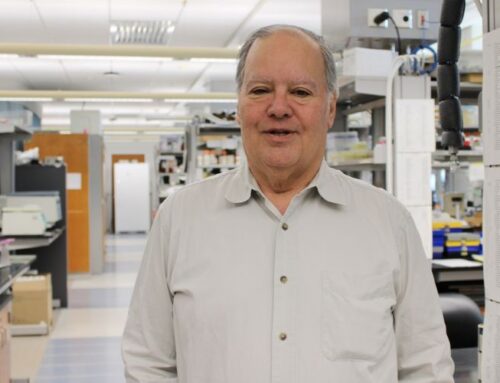Key feature of circadian clock identified in bacteria
By: TAMU Biology, Dr. Paul Hardin
Texas A&M circadian clock researchers collaborate to reveal that a key feature of the bacterial clock mechanism is also essential for keeping time in animals, plants and fungi.
In eukaryotes (e.g. animals, plants and fungi), circadian rhythms are controlled by ~24hr transcriptional feedback loops in which activators drive the transcription of repressors that feedback to inhibit the activators. In contrast, prokaryotes like cyanobacteria keep circadian time via a post-translational oscillator that relies on the ultra-slow ATPase activity of KaiC protein. Distinguished Professor Paul Hardin recently collaborated with Professor Erquan Zhang at the National Institute of Biological Sciences in Beijing China and Susan Golden at University of California San Diego to show that RuvB proteins from eukaryotes are ultra-slow ATPases like cyanobacterial KaiC that interact with transcriptional feedback loop components to drive circadian rhythms in gene expression and behavior. This work has been published as a research article in Nature (Liao, M., Liu, L., Xu, Z., Fang, M., Yu, Z., Cui, Y., Sun, Z., Huo, Ran., Huang, F., Liu, M., Zhou, Q., Song, X., Han, H., Chen, S., Xu, X., Qin, X., He, Q., Ju, D., Wang, T., Thakkar, N., Hardin, P. E., Golden, S. S., and Zhang, E. (2025) The P-loop NTPase RUVBL2 is a conserved clock component across eukaryotic species. Nature, in press.).
Why It Matters
The circadian clock drives daily rhythms metabolism, physiology and behavior, but when the clock is disrupted by shift work at night or traveling across time zones it can increase the risk of diseases such as diabetes, depression and even cancer. Previous studies show that the adenosine analog cordecypin shifts the phase of the clock by disrupting RUVBL2 complexes, thus understanding how RuvB orthologs function to keep time may enable treatments to combat diseases caused by circadian clock disruption.
Key Discoveries
The researchers showed that RuvB proteins are highly conserved from bacteria to humans and associate with clock protein complexes in plants, fungi, and animals. The mouse RuvB ortholog RUVBL2 exhibits weak ATPase activity of ~13 ATP molecules hydrolyzed per day, where RUVBL2 hydrolyzes ATP faster in short period mutants and slower in long period mutants. Knocking down the expression of RuvB orthologs PONTIN and REPTIN in fruit flies lengthens or eliminates activity rhythms and RUVBL2 mutants either shorten, lengthen or abolish gene expression and activity rhythms in mammals, thus validating these RuvB orthologs as core clock components.
Future Implications
The discovery that RuvB orthologs are critical clock components has transformed our understanding of how the circadian clock keeps time in eukaryotes and provides unprecedented insights into circadian clock evolution.
For more information, please contact:
Paul E. Hardin, Ph.D. Distinguished Professor Department of Biology, Texas A&M University Email: phardin1@tamu.edu





